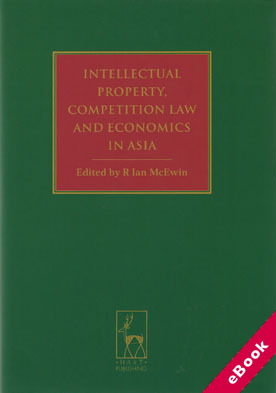We are now closed for the Christmas and New Year period, returning on Monday 5th January 2026. Orders placed during this time will be processed upon our return on 5th January.

The device(s) you use to access the eBook content must be authorized with an Adobe ID before you download the product otherwise it will fail to register correctly.
For further information see https://www.wildy.com/ebook-formats
Once the order is confirmed an automated e-mail will be sent to you to allow you to download the eBook.
All eBooks are supplied firm sale and cannot be returned. If you believe there is a fault with your eBook then contact us on ebooks@wildy.com and we will help in resolving the issue. This does not affect your statutory rights.
This book results from a conference held in Singapore in September 2009 which brought together distinguished lawyers and economists to examine the differences and similarities in the intersection between intellectual property and competition laws in Asia.
The prime focus was how best to balance these laws to improve economic welfare. Countries in Asia have different levels of development and experience with intellectual property and competition laws. Japan has the longest experience and now vigorously enforces both competition and intellectual property laws.
Most other countries in Asia have only recently introduced intellectual property laws (due to the TRIPS Agreement) and competition laws (sometimes due to the World Bank, IMF or free trade agreements). It would be naïve to think that laws, even if similar on the surface, will have the same goals or be enforced similarly. Countries have differing degrees of acceptance of these laws, different economic circumstances and differing legal and political institutions.
To set the scene, Judge Doug Ginsberg, Greg Sidak, David Teece and Bill Kovacic look at the intersection of intellectual property and competition laws in the US. Next, country chapters on Asia are written, jointly, by two authors (one a lawyer, the other an economist).
The country chapters outline the institutional background to the intersection in each country, discuss the policy underpinnings (theoretically as well as describing actual policy initiatives), analyse the case law in the area, and make policy prescriptions.